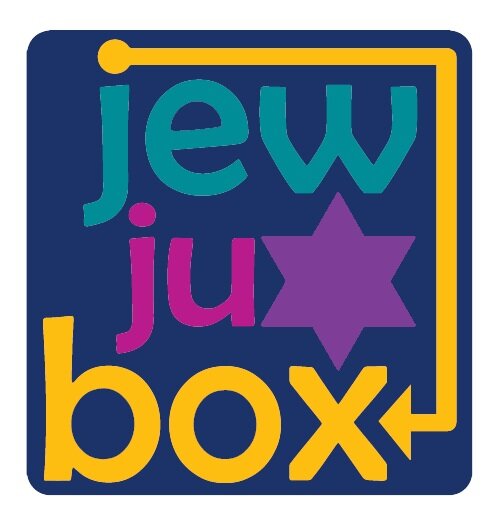Wherever you go in Eastern Canada, there may be something Jewish
Plaques, Markers, and Monuments in Eastern Canada
This summer, we’re updating and re-printing some posts from our old website. This one was first posted in July, 2019, on our old website. We’ve added some new places to check out.
Ellen writes:
This is the final in a series of blogs of historical plaques and markers about the Jewish community in Canada. Full disclaimer – I haven’t actually visited most of these, but I’ve done the virtual poking around, so you don’t have to! Just a quick reminder – our Simply Shabbat bag is light and small enough to tuck into your bag for Shabbat on the road. Of course, feel free to print this blog and take it on your travels.
Quebec
In Montreal, St. Laurent Boulevard is also known as The Main, and it’s been an immigrant area for different waves of immigrants. Naturally, it was a centre for the Jewish community at one time. There’s a lengthy plaque where you can read about the history of the street and who’s passed through there. Look for it at the intersection of Saint Laurent and Rue de la Commune Ouest.
While you’re on Saint Laurent, go to 1182 Saint Laurent, the Monument National. (Since it’s been designated a National Historical Site, it is now, confusingly, the Monument National National Historic Site.) Built in 1893, and still a functioning performance space and theatre, it was a “centre of Yiddish performance in Canada between 1915 and 1957”, according to the plaque.
While in and around Montreal, you can also find the Jewish section in the Last Post Fund National Field of Honour, another National Historic Site of Canada, at 703 Donegan Street, in Pointe-Claire, Montreal. The plaque marks the origin of this military cemetery, established by the last Post fund, which undertook to bury soldiers for free, before that was a government responsibility.
At 4060 Park Ave, on Mount Royal, stands the Mordecai Richler Gazebo. It was refurbished and renamed in honour of the famed Jewish Montreal writer. A library about a half-hour’s walk away, at 5434 Avenue du Parc is also named after him.
Did you know that the “Father of Canadian Figure Skating” was a Jew? His name was Louis Rubenstein, and he won the gold medal in the precursor to the World Figure Skating Championships, before going on to found the forerunner of Skate Canada. There’s a fountain dedicated to him at Parc Jeanne-Mance at the corner of Park Avenue and Mount Royal Avenues, and a plaque honouring him at 2055 Peel St, Montreal, QC H3A 1V4. (A quick glance at Google Maps suggests that the plaque may be temporarily inaccessible as there is construction in the area).
At 1 Grande Allée E in Quebec City, you’ll find Maison Pollack, and by the front stairs there is a plaque commemorating Maurice Pollack. Pollack immigrated from Ukraine to Quebec city in 1902. He and his stores were the target of a boycott and anti-Semitic campaign in the 1930’s, and 40’s, but his business thrived and in the 1950’s he established a foundation that supported universities, symphony orchestras, and hospitals in Montreal and Quebec City.
Also in Quebec City, the Beth Israel Cemetery has been designated as a National Historical Site, as a “tangible reminder of the pioneer Jewish community founded in 1759.” You’ll find it on Rene Levesque Boulevard.
At 1147 Rue Hart in Trois Rivieres there is a plaque commemorating Ezekiel Hart, who in 1807 became the first Jew ever elected to the Legislative Assembly of Lower Canada. As the plaque explains, he was unable to take his seat, as the oath of office included the words, “n the true faith of a Christian”. It wasn’t until 1832 that the Emancipation Act granted Jews full civil rights. Remarkably, at that time, Jamaica was the only other place in the British Empire where Jews had these rights. (Of course, women’s rights came much later in Canada - in 1918, to be exact.)
New Brunswick
In Moncton, you’ll find the Free Meeting House, built in 1821, and restored in 1990. Until 1963, it was a place of worship and meeting place for Jewish, Catholic, and Protestant denominations. It has been designated a National Historical Site because "it is a symbol of the interdenominational religious toleration prevalent in the Maritime Provinces in the late 18th and early 19th centuries,” according to Parks Canada. You’ll find it at 140 Steadman Street, Moncton, but as it’s a facility that’s often rented out for private occasions, you’ll need ask at Resurgo Place, at 20 Mountain Road, which shares the property.
In Maugerville, New Brunswick, the Acadia Forest Experimental Station was a complex of buildings that were originally built as “relief camps” during the Great Depression. Unemployed single and homeless people were given shelter, employment, and medical care. Later, the camps were internment places for Jewish refugees, and Italian and German POW’s. While the buildings were apparently sold and moved, there is an Internment Camp museum with a trail open to the public.
We hope you’ve enjoyed this trek across Canada. I found most of these sites by using the search terms “Jewish”, “Jew”, and “synagogue” in the following sites. They’re all great and interesting websites if you want to poke around to find your own landmarks as well.
People share markers they find with the Waymarking community, at Waymarking. http://www.waymarking.com/
Parks Canada Directory of Federal Heritage Designation https://www.pc.gc.ca/apps/dfhd/default_eng.aspx





